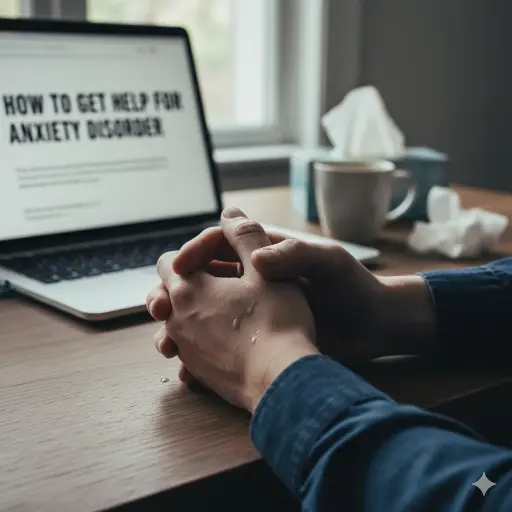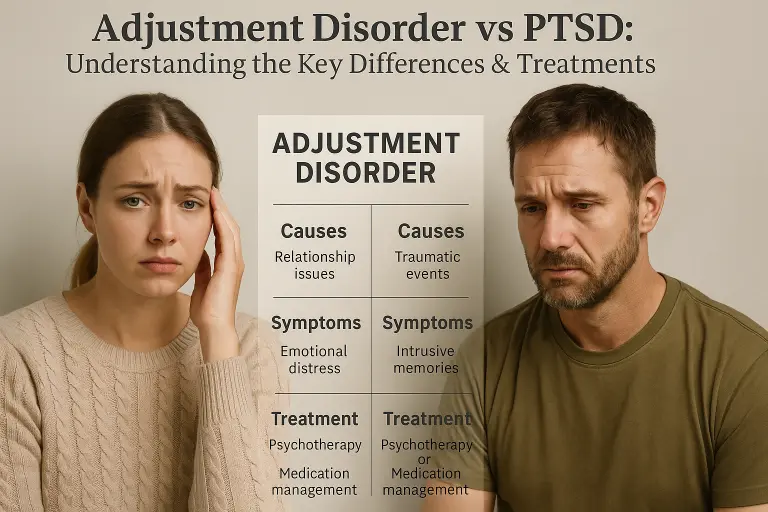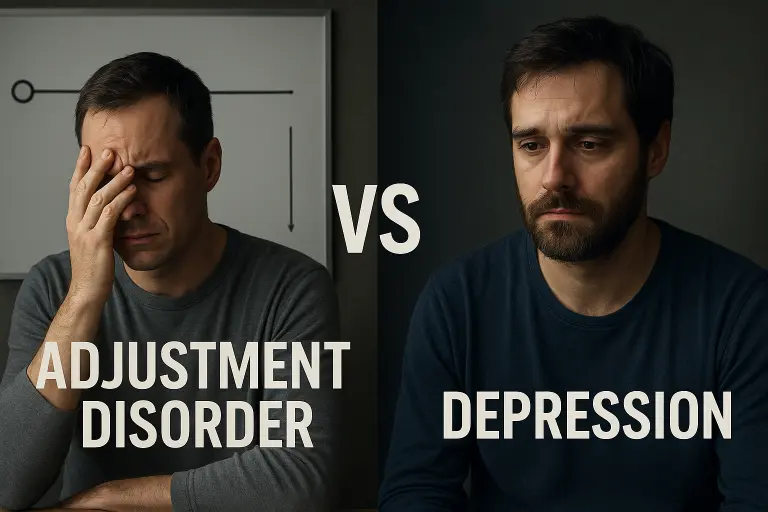The Benefits of Behavioral Health for Individuals with PTSD
Unlocking Healing: How Behavioral Health Transforms PTSD Recovery

Understanding the Power of Behavioral Interventions in PTSD Treatment
Post-traumatic stress disorder (PTSD) is a complex mental health condition affecting millions worldwide, often following exposure to traumatic events like violence, disasters, or accidents. Effective management requires a nuanced approach that integrates evidence-based therapies, medication, and supportive care. Among these, behavioral health interventions play a pivotal role in fostering recovery, resilience, and improved quality of life for individuals grappling with PTSD.
Core Evidence-Based Therapies for PTSD

What are effective behavioral health interventions for individuals with PTSD?
Effective treatments for PTSD primarily involve evidence-based psychotherapies known for their safety and efficacy. Among these, trauma-focused cognitive-behavioral therapy (CBT) is considered a cornerstone intervention. This approach aims to modify maladaptive thoughts, feelings, and behaviors associated with traumatic memories.
Within trauma-focused CBT, several specific therapies are widely used:
| Therapy Name | Main Focus | Typical Duration | Additional Details |
|---|---|---|---|
| Cognitive Processing Therapy (CPT) | Helps individuals reshape unhelpful beliefs about trauma | About 12 sessions | Focuses on modifying distorted thoughts about trauma and self-blame |
| Prolonged Exposure (PE) | Gradually confronts trauma-related memories and cues | Around 3 months | Encourages systematic exposure to trauma-related stimuli to reduce fear and avoidance |
| Eye Movement Desensitization and Reprocessing (EMDR) | Uses bilateral stimulation while recalling trauma | Variable, often 8-12 sessions | Reduces emotional impact of trauma through rhythmic eye movements |
These therapies have been validated across many cultures and can be adapted for various settings, including individual, group, or telehealth formats. Group therapy, facilitated in a supportive environment, promotes shared understanding, emotional support, and the development of coping strategies.
In addition to psychotherapy, medications such as SSRIs—including sertraline and paroxetine—are commonly used to manage symptoms like anxiety and depression associated with PTSD. Combining medication with therapy often yields the best outcomes.
Tailoring treatment to individual needs involves considering the person's cultural background, trauma type, and personal preferences. This personalized approach enhances the likelihood of symptom reduction and recovery.
Research supports these therapies not only in reducing core PTSD symptoms but also in fostering resilience and emotional regulation, which are crucial for long-term recovery.
The Mechanisms and Effectiveness of CBT in PTSD Treatment

How does cognitive-behavioral therapy (CBT) help treat PTSD?
Cognitive-behavioral therapy (CBT) assists in treating PTSD primarily by altering negative thought patterns and reducing maladaptive behaviors linked to traumatic experiences. This therapy emphasizes trauma-focused approaches such as Cognitive Processing Therapy (CPT) and Prolonged Exposure (PE), which guide individuals through re-evaluating unhelpful beliefs, confronting trauma-related memories gradually, and developing healthy coping strategies.
The process encourages patients to process their trauma in a safe environment, enabling them to reframe distressing beliefs like guilt, shame, or mistrust. By doing so, CBT helps diminish symptoms such as flashbacks, avoidance, and hyperarousal. Multiple clinical trials and meta-analyses have confirmed its high efficacy across diverse populations, showing significant and sustained reduction in PTSD symptoms.
An important aspect of CBT’s success lies in the neurobiological and physiological changes it induces. Neuroimaging and physiological studies reveal that patients responding to CBT experience brain activity alterations in regions associated with emotion regulation and fear response, supporting its mechanism of action.
Guidelines from leading health organizations advocate for CBT as a first-line intervention for PTSD. Its proven safety, adaptability into various formats—individual, group, and online—and cultural adaptability further solidify its status as an effective, evidence-based treatment option. Overall, CBT not only targets the psychological symptoms but also fosters long-term resilience, making it a cornerstone of PTSD management.
Trauma-Focused and Trauma-Informed Care: Building a Foundation for Healing

What is trauma-focused and trauma-informed care in the context of PTSD recovery?
Trauma-focused care encompasses specific therapeutic approaches designed to directly address the impacts of traumatic experiences. Techniques such as Eye Movement Desensitization and Reprocessing (EMDR), Trauma-Focused Cognitive Behavioral Therapy (TF-CBT), and prolonged exposure therapy help individuals process traumatic memories, reduce emotional distress, and alleviate symptoms of PTSD.
Trauma-informed care extends beyond individual therapies to include an organizational and systemic approach within healthcare settings. It recognizes that trauma affects many aspects of a person’s life and requires a supportive environment that prioritizes safety, trust, empowerment, and collaboration.
Both frameworks are essential for effective PTSD treatment. Trauma-informed care ensures that environments and staff interactions do not re-trigger trauma, fostering a sense of safety and control for patients. Integrating trauma-focused therapies within this supportive structure maximizes healing potential and helps prevent re-traumatization.
Implementing these approaches involves systemic changes such as staff training, policy adaptations, and active patient involvement. The goal is to create a healing environment where individuals feel respected and empowered to engage in their recovery process.
Overall, combining trauma-focused therapy with trauma-informed principles enhances treatment outcomes, allowing individuals to navigate their trauma with dignity and resilience, and lays a strong foundation for long-term healing.
The Therapeutic Benefits of Group Settings for PTSD Patients
What are the benefits of group therapy for PTSD?
Group therapy provides a range of valuable benefits for individuals dealing with PTSD. One of the main advantages is the creation of a supportive environment where participants can openly share their experiences without judgment. This setting encourages emotional expression and helps reduce feelings of shame and isolation, which are common among trauma survivors.
Research shows that trauma-focused group therapies, such as group cognitive-behavioral therapy (CBT), are effective in decreasing symptom severity. These therapies foster peer validation, allowing members to realize they are not alone in their struggles. Feeling understood and supported by others who have had similar experiences can be motivating and empowering.
Additionally, group therapy helps participants develop crucial coping skills. Through shared experiences and guidance from trained therapists, individuals learn new strategies to manage triggers, reduce hyperarousal, and improve emotional regulation. The social support gained from such settings strengthens resilience, helping individuals feel more capable of facing everyday challenges.
Group settings also promote the development of communication skills. Members practice expressing emotions, listening actively, and giving and receiving feedback, which enhances their interpersonal abilities.
While evidence supports the effectiveness of group therapy in fostering recovery, further research remains necessary to understand the full scope of its benefits across different PTSD treatment approaches. Nevertheless, group therapy remains a cornerstone in comprehensive care, helping individuals rebuild connections, confidence, and hope on their healing journey.
Long-Term Outcomes and Resilience Through Behavioral Interventions
 Behavioral health treatments for PTSD, especially trauma-focused approaches like Trauma-Focused Cognitive Behavioral Therapy (TF-CBT), Cognitive Processing Therapy (CPT), Prolonged Exposure (PE), and Eye Movement Desensitization and Reprocessing (EMDR), have shown strong, lasting benefits.
Behavioral health treatments for PTSD, especially trauma-focused approaches like Trauma-Focused Cognitive Behavioral Therapy (TF-CBT), Cognitive Processing Therapy (CPT), Prolonged Exposure (PE), and Eye Movement Desensitization and Reprocessing (EMDR), have shown strong, lasting benefits.
These therapies can produce symptom reduction that persists at least 12 months after treatment ends. Studies indicate that around 46–60% of individuals experience full recovery or significant remission, often meeting criteria for being symptom-free.
One of the strengths of these interventions is their effectiveness in diverse populations, including adults, children, and adolescents from various cultural backgrounds. Culturally adapted CBT enhances accessibility and results across different groups.
Long-term improvements include not just fewer PTSD symptoms but also reductions in comorbid conditions such as depression and anxiety. Many individuals report better overall psychological functioning, increased resilience, and a greater capacity to cope with future stressors.
Moreover, engaging in these evidence-based treatments helps patients develop essential coping skills—such as relaxation, stress management, and emotion regulation—that support ongoing recovery.
The positive effects also extend to improvements in social functioning, quality of life, and emotional well-being, which are crucial for long-term resilience. Regular follow-ups and booster sessions can further sustain these gains.
In sum, long-term outcomes show that behavioral interventions can lead to sustained symptom relief, increased resilience, and a higher quality of life for those affected by PTSD, making them vital components of effective mental health care.
The Critical Role of Professional Mental Health Support
Professional mental health support is essential when treating PTSD because it ensures access to validated therapies that effectively reduce symptoms. Treatments like cognitive-behavioral therapy (CBT), including trauma-focused approaches, and EMDR are best delivered by trained specialists. These experts can tailor treatment plans that meet each individual's unique needs, fostering a more effective and focused healing process.
Monitoring progress closely allows therapists to adjust interventions if symptoms persist or worsen. This ongoing evaluation helps prevent symptom escalation, especially during stressful periods or when confronting trauma reminders. Skilled professionals also provide education about PTSD, helping individuals understand their condition and learn coping strategies.
Working with healthcare providers increases the likelihood of achieving sustained recovery. Their guidance supports emotional resilience, enhances therapy engagement, and offers a safe space to process difficult memories. Overall, professional mental health support significantly improves outcomes, empowering individuals to regain control and rebuild their lives after trauma.
Psychological Benefits and Emotional Recovery through Trauma Therapy
Trauma therapy plays a vital role in fostering emotional recovery and resilience in individuals with PTSD. One of its primary benefits is improving emotional regulation, which helps sufferers manage intense feelings such as anger, fear, and sadness more effectively. Techniques like EMDR and trauma-focused CBT enable individuals to process traumatic memories, transforming overwhelming emotions into manageable experiences.
A crucial aspect of trauma therapy is restoring self-trust. By creating a safe, supportive environment, therapy encourages individuals to rebuild confidence in their ability to handle emotions and navigate life challenges.
Coping skills are emphasized during treatment, providing practical tools to manage triggers and reduce emotional reactivity. These skills empower individuals to maintain control over their responses and foster emotional stability.
Building emotional resilience is another key outcome. Through therapy, individuals learn to bounce back from stressors, develop a positive outlook, and strengthen their capacity to face future difficulties.
On a relational level, trauma-informed approaches enhance interpersonal relationships. As emotional regulation and self-awareness improve, individuals become better at communicating, establishing trust, and reconnecting with loved ones. Overall, trauma therapy not only alleviates PTSD symptoms but also promotes lasting emotional health, empowering individuals to live more fulfilling and connected lives.
Advancing Recovery with Empathy and Evidence
The landscape of PTSD treatment underscores the importance of integrating evidence-based behavioral health interventions, trauma-informed care, and professional support. Together, these approaches foster a comprehensive healing environment that addresses trauma’s multifaceted impact. As research continues to reveal the neurobiological and psychological benefits of therapies like CBT, EMDR, and group support, the potential for long-term recovery and resilience grows stronger. For individuals coping with PTSD, timely access to personalized, compassionate treatment offers a path not only to symptom relief but also to renewed hope, emotional stability, and restored quality of life. Building awareness and expanding the availability of these interventions are essential steps toward transforming outcomes for countless trauma survivors.
References
- Cognitive behavioral therapy for the treatment of post-traumatic ...
- Treatments for PTSD - American Psychological Association
- Post-Traumatic Stress Disorder - National Institute of Mental Health
- 15 Benefits of Group Therapy with a PTSD Therapist
- Benefits Of Group Therapy Sessions For PTSD | Veterans Affairs
- 5 Benefits of Trauma-Focused Care | Mental Health Treatment
- Treatment - Post-traumatic stress disorder - NHS
More Resources
A team ready to start your journey.
Get in touch — today.
We are a safe space – a haven for exceptional individuals to receive discreet, personalized, in-person treatment and care.
.avif)









